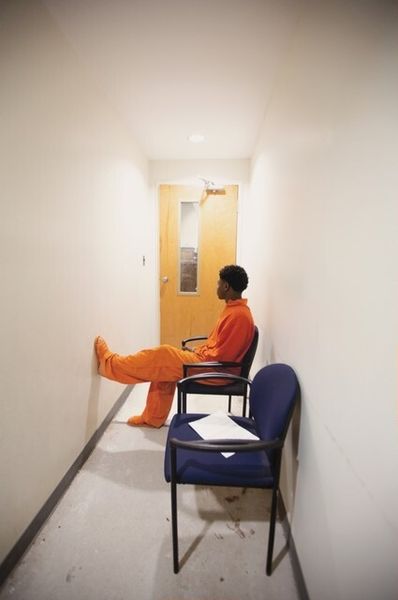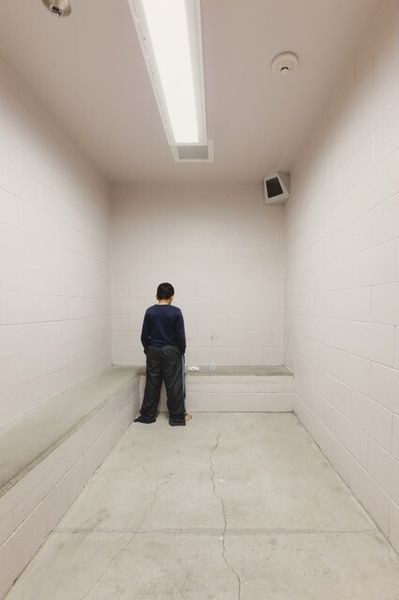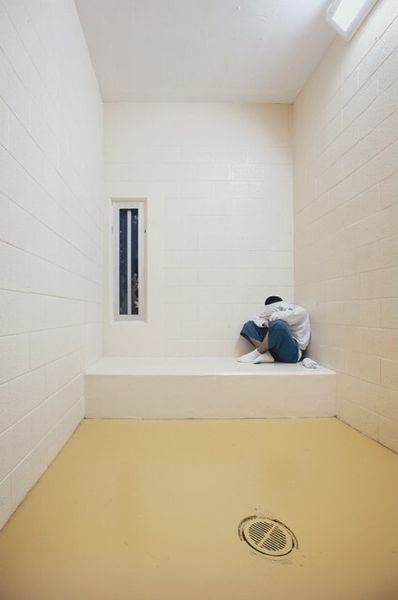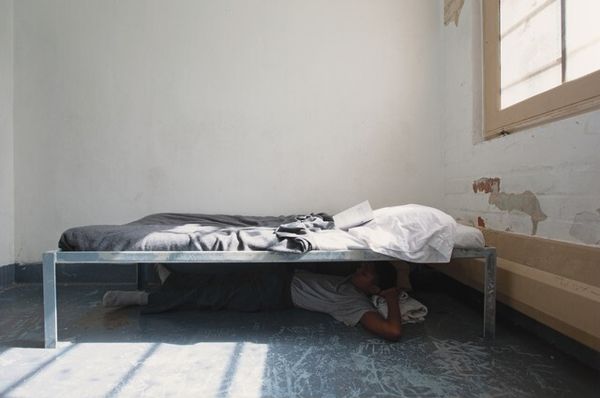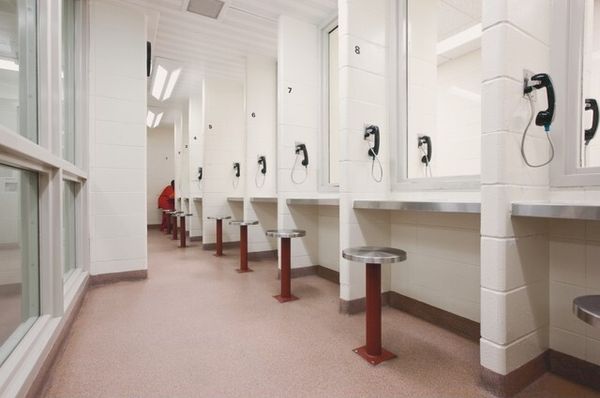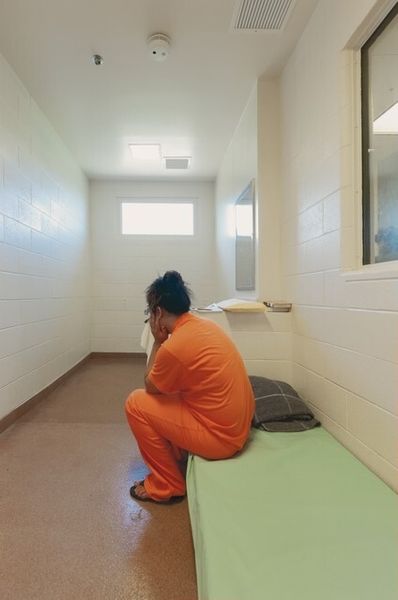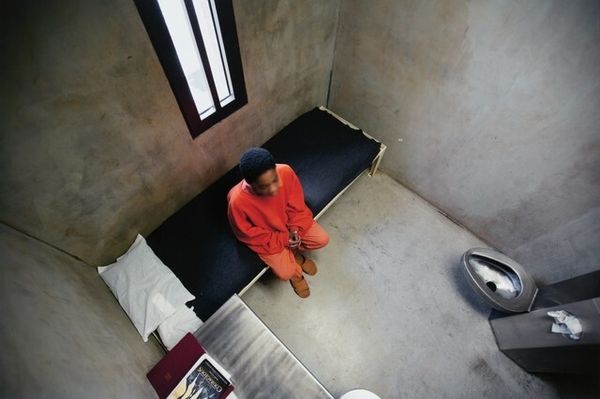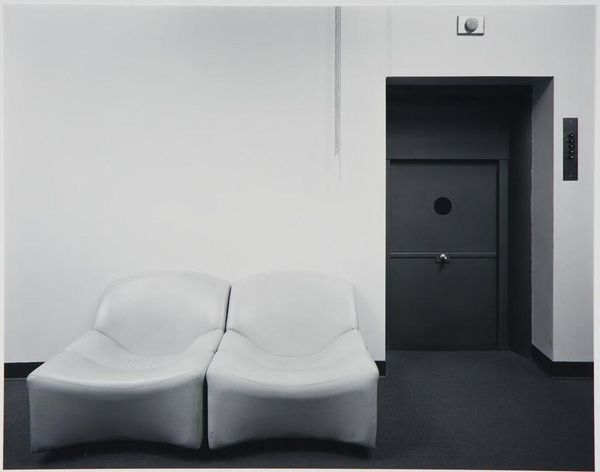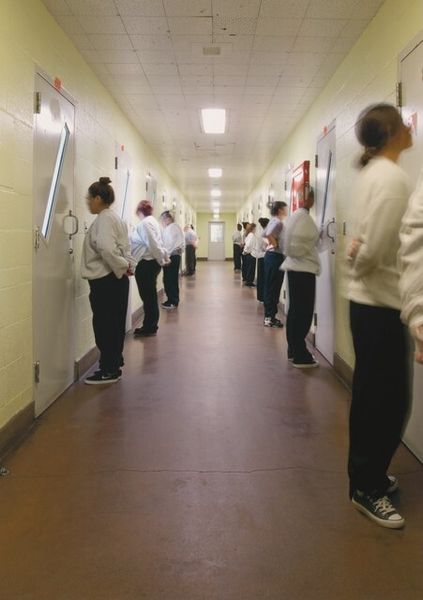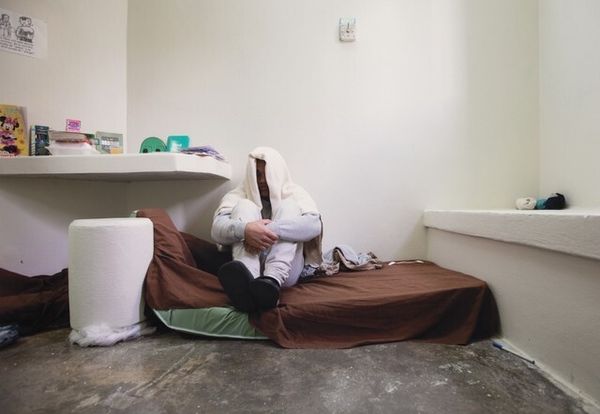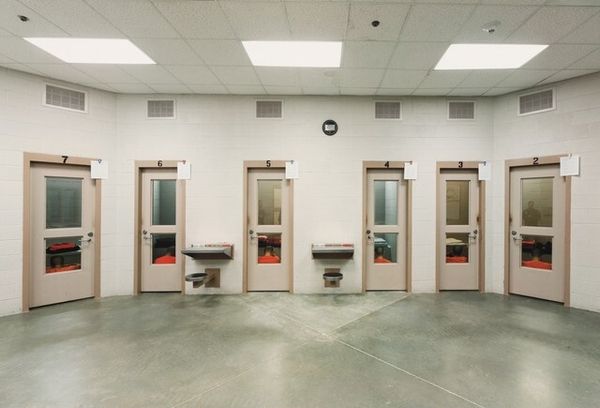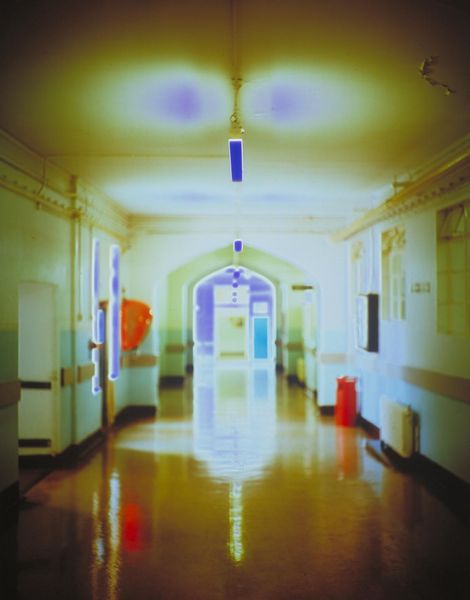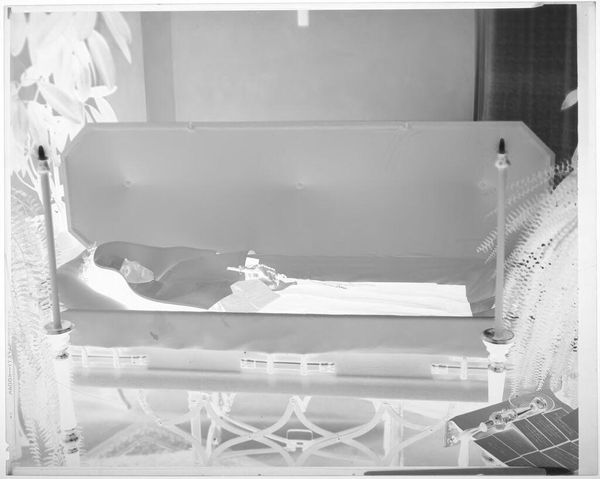
Dimensions: image: 37.2 × 55.9 cm (14 5/8 × 22 in.) sheet: 43.2 × 61.3 cm (17 × 24 1/8 in.)
Copyright: National Gallery of Art: CC0 1.0
Curator: This stark image, a C-print photograph entitled "Indiana," was captured by Richard Ross in 2011. It’s part of a larger series documenting the lives of incarcerated youth. My immediate feeling is one of profound isolation. Editor: The composition certainly drives that home. We see a styrofoam food container dominating the foreground, brightly lit, with just a glimpse of a face peering out from behind. Food, a primal necessity, becomes a stark symbol here. It brings to my mind the Roman panem et circenses—bread and circuses. What's provided, and at what cost? Curator: Precisely. The entire frame, with its cold institutional grays and beige, speaks volumes about power dynamics. The serving hatch acts as both a barrier and a focal point, visually encapsulating the restriction of movement and limited choices within the juvenile justice system. This work critiques the systematic dehumanization of young people who are often products of disenfranchisement and neglect. Editor: And that glimpse of the eyes…the young person is watching, aware. In iconography, eyes are frequently viewed as the windows to the soul; that little sliver challenges the whole environment of dehumanization. The white box also feels loaded. It’s mundane, everyday…but consider the white cube of a gallery space, what are they hoping to portray here and expose to us? Curator: Ross deliberately confronts viewers with the unvarnished reality of confinement. He leverages the aesthetics of realism not for beauty, but for accountability. These portraits, even when partial, insist on the subjects' inherent worth and demand acknowledgment of their humanity within a system designed to diminish it. It speaks of societal failure as well. Editor: It's unsettling. The symbolism of a single portion—sustenance reduced to a minimum—juxtaposed with those watchful eyes, forces the viewer to confront not just the individual's predicament, but also the ethics of a society that perpetuates these conditions. The geometry creates this division to make an invisible cage and frame our understanding of juvenile sentencing. Curator: Absolutely, this artwork offers an invitation, or rather a summons, to consider the ethics of visibility and erasure, to question whose stories are told, and how. It serves as a call for justice within an often-opaque system. Editor: A powerful image; stark, memorable, and, hopefully, a catalyst for much-needed change. The emotional resonance feels like a plea, hanging on the balance of power and food.
Comments
No comments
Be the first to comment and join the conversation on the ultimate creative platform.

